Disclosure: This article contains affiliate links. We may earn a commission from purchases at no extra cost to you, which helps our travel content.
The scent of arepas frying in the early morning mist. The vibrant colors of exotic fruits I couldn't name. The gentle hum of conversations in Spanish floating through café windows. My first morning in Bogotá felt like stepping into a sensory therapy session—one that would continue throughout my weekend exploration of Colombia's capital. As someone who has spent years helping clients connect with their cultural identities through sensory experiences, I found myself becoming the student in Bogotá's outdoor classroom of culinary tradition and innovation. What began as a simple weekend getaway transformed into a journey through a city where food isn't just sustenance—it's living history, cultural resistance, and collective healing. Join me as we wander through the markets, street corners, and dining rooms where Bogotá's culinary revolution is quietly changing how we understand Colombian cuisine.
The Morning Ritual: Market Explorations
Every meaningful journey begins with morning rituals, and in Bogotá, that means an early visit to Paloquemao Market. I arrived just after 6 AM when the market was already pulsing with energy but before the tourist crowds descended. This is intentional travel at its finest—observing the city as it awakens, watching locals select the day's ingredients with practiced precision.
The fruit section became my immediate kokoro no yasuragi (心の安らぎ)—a place of heart's ease. Colombia hosts over 550 fruit varieties, many of which I'd never encountered in my travels across four continents. The vendors, noticing my curious expressions, began offering samples: granadilla with its crunchy seeds swimming in sweet jelly, feijoa with its perfumed flesh, and my absolute favorite—lulo, whose citrusy-rhubarb flavor defies simple description.
As a mental health professional, I'm fascinated by how food markets function as community therapy spaces. At Paloquemao, I witnessed multi-generational knowledge transfer, cultural pride, and the simple joy of human connection through shared culinary heritage. The market women (las placeras) don't just sell food—they preserve cultural memory through their recipes and stories.
I spent nearly three hours wandering the stalls, eventually stopping for a traditional breakfast of changua—a milk soup with eggs and cilantro that locals swear cures everything from homesickness to hangovers. The elderly woman who served me explained how her grandmother taught her to make it during La Violencia in the 1950s when comfort food became literal emotional survival.
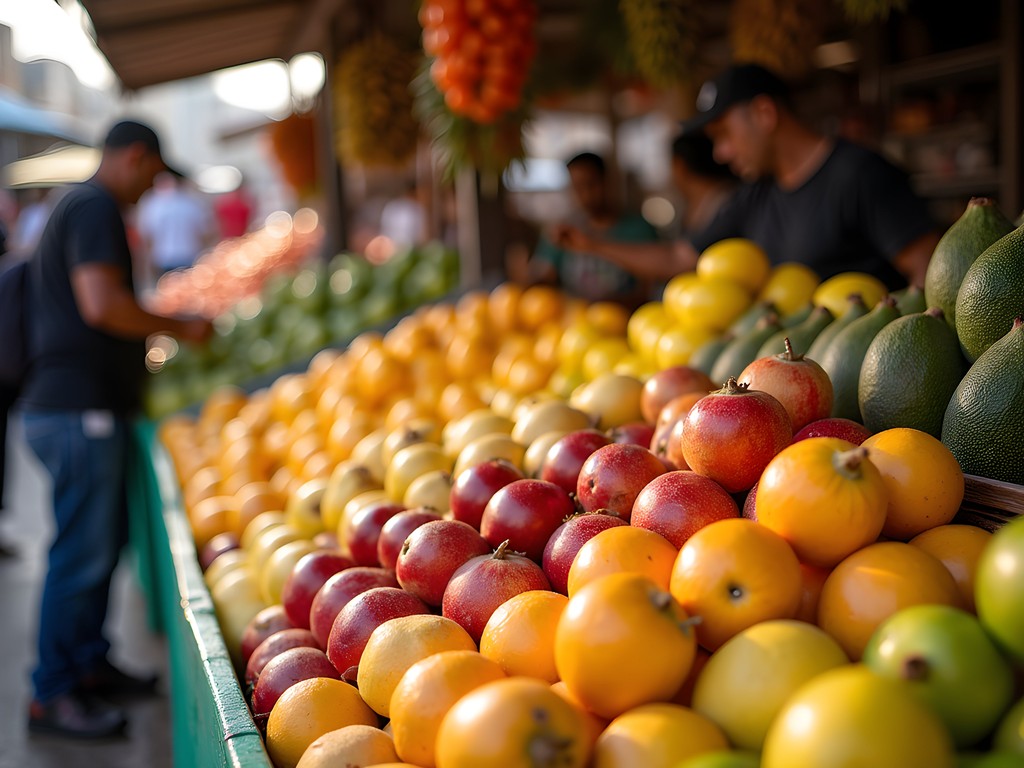
💡 Pro Tips
- Arrive at Paloquemao Market before 8 AM to see it at its authentic best and avoid crowds
- Bring small bills (Colombian pesos) for easier transactions with vendors
- Ask permission before photographing people at their stalls—respect creates beautiful connections
Street Food Sanctuaries: The Soul of Bogotá
If Bogotá's markets are its heart, then street food is undoubtedly its soul. After years documenting disappearing food traditions across coastal Japan, I've developed a deep appreciation for cuisine that exists outside formal restaurants—the dishes that grandmothers make, that workers grab between shifts, that sustain communities through generations.
La Perseverancia neighborhood became my afternoon sanctuary. This working-class district hosts some of the city's most authentic street food, particularly at the small market where vendors have perfected recipes over decades. Here, I discovered lechona—a whole roasted pig stuffed with rice, peas, and spices that's a masterpiece of Colombian culinary engineering.
What struck me most was how street food in Bogotá serves as cultural resistance. Many vendors proudly explained how their dishes preserve indigenous and African influences that colonial powers once tried to erase. Food becomes identity preservation, each bite an act of cultural memory.
For those concerned about trying street food, I've traveled through 47 countries using my trusty water purifier bottle to stay healthy while still enjoying authentic local cuisine. It's been an essential companion for experiencing street food safely across Latin America.
My favorite discovery was ajiaco—a chicken and potato soup with corn, capers, cream, and guasca herb that embodies Bogotá's indigenous and Spanish heritage in one steaming bowl. At a small stall run by Doña Carmen, who has made ajiaco for 42 years, I watched as businesspeople and construction workers sat side by side, temporarily dissolving social barriers through shared culinary pleasure.
"Food remembers what people forget," Doña Carmen told me as she added a final sprinkle of capers to my bowl—a statement that perfectly captures why street food matters beyond mere sustenance.
💡 Pro Tips
- Look for street food stalls with long local lines—they're usually the safest and most delicious
- Carry hand sanitizer, but don't let fear prevent you from trying authentic dishes
- Learn basic food terms in Spanish to communicate dietary restrictions or preferences
The Coffee Renaissance: Beyond Your Average Cup
As both a mental health counselor and perpetual language student, I've spent countless hours in coffee shops around the world. These spaces serve as informal therapy rooms and cultural classrooms—places where communities gather, ideas percolate, and strangers become friends over shared caffeine rituals.
Bogotá's coffee scene is experiencing a remarkable renaissance that parallels its culinary revolution. For decades, Colombia exported its finest beans while keeping lower quality products for domestic consumption. Today, that paradigm has shifted dramatically, with third-wave coffee shops educating locals and visitors alike about the country's extraordinary coffee heritage.
At Azahar Coffee Company in Chapinero neighborhood, I participated in a cupping session that transformed my understanding of Colombian coffee. The barista, Santiago, explained how altitude, soil, and processing methods create distinct flavor profiles across Colombia's diverse growing regions. What struck me most was the emphasis on direct trade relationships with small-scale farmers—many of whom are women and indigenous growers previously marginalized in the industry.
"Coffee is therapy," Santiago told me as we discussed how the ritual of brewing and tasting creates mindfulness moments in our hectic lives. As someone who often recommends sensory grounding techniques to clients experiencing anxiety, I couldn't agree more.
For serious coffee enthusiasts, I recommend bringing a manual coffee grinder on your travels. I've used mine throughout Colombia to preserve the freshness of beans purchased directly from local roasters.
Beyond the exceptional coffee itself, these cafés serve as creative incubators where Bogotá's artists, activists, and entrepreneurs gather. At Café Cultor, I met a group of young Colombians developing sustainable tourism initiatives in formerly conflict-affected regions—a powerful reminder that coffee spaces often nurture social transformation alongside personal reflection.
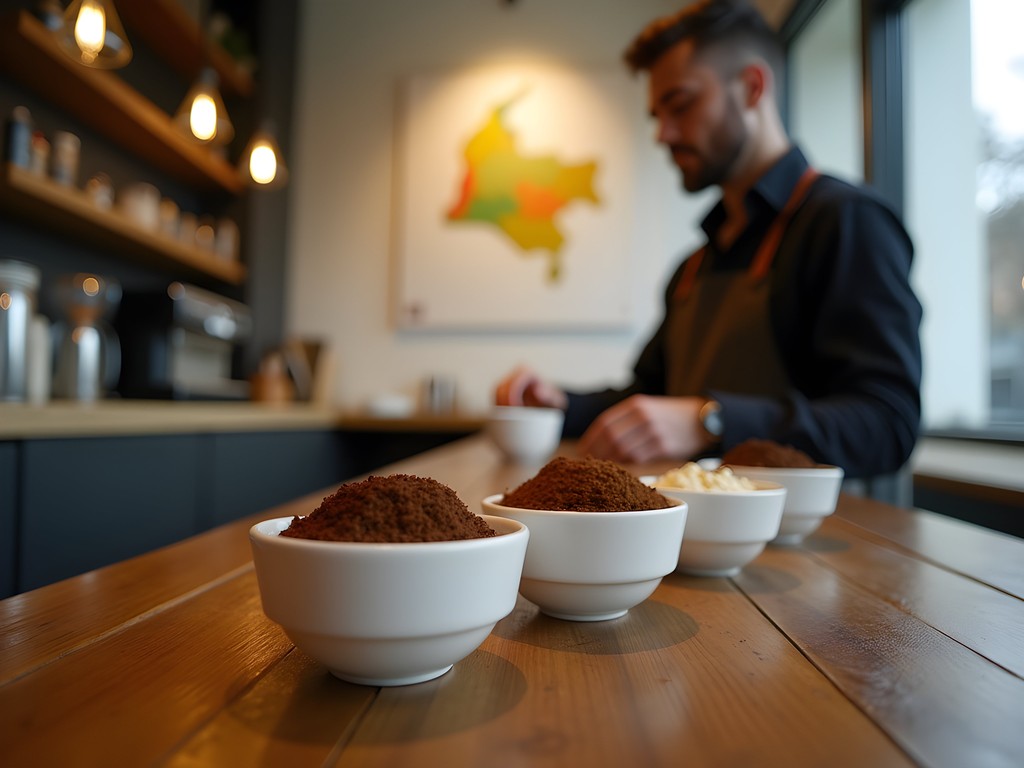
💡 Pro Tips
- Ask baristas about the specific region your coffee comes from—Colombian growing regions have distinctive flavor profiles
- Visit cafés during mid-morning (10-11 AM) to avoid crowds while still experiencing authentic local atmosphere
- Consider purchasing beans directly from roasters as meaningful, consumable souvenirs
Fine Dining with Purpose: The New Colombian Cuisine
My exploration of Bogotá's culinary landscape culminated in an evening at Mini-Mal, a restaurant at the forefront of what's being called New Colombian Cuisine. Chef Antonuela Ariza has created a dining experience that feels less like a meal and more like an anthropological journey through Colombia's biodiversity and cultural heritage.
What distinguishes Bogotá's fine dining revolution from similar movements in other world capitals is its deep commitment to social and environmental purpose. At Mini-Mal, ingredients are sourced directly from indigenous communities and small-scale producers from Colombia's most biodiverse regions. The menu becomes a vehicle for preserving traditional knowledge and supporting sustainable livelihoods.
I opted for the tasting menu—a parade of dishes that told stories of Colombia's Pacific coast, Amazon rainforest, and Andean highlands. Particularly memorable was a delicate ceviche made with sustainable fish, mango, coconut milk, and ají dulce that honored Afro-Colombian culinary traditions while presenting them through a contemporary lens.
Between courses, I spoke with Chef Antonuela about how cooking became her form of activism. "When we lose a traditional ingredient, we lose a piece of our collective memory," she explained while serving a dessert featuring copoazú, an Amazonian fruit related to cacao that few Colombians have tasted despite it being native to their country.
For travelers wanting to document these extraordinary culinary experiences, I recommend a compact camera that performs beautifully in low-light restaurant settings without being as intrusive as a full DSLR. My own has captured countless food memories across my travels.
What makes Bogotá's fine dining scene particularly special is its accessibility. While certainly not street food prices, restaurants like Mini-Mal, El Chato, and Leo offer world-class tasting menus at a fraction of what you'd pay in New York, Tokyo, or Paris. This democratization of fine dining allows more people to experience these important culinary narratives.
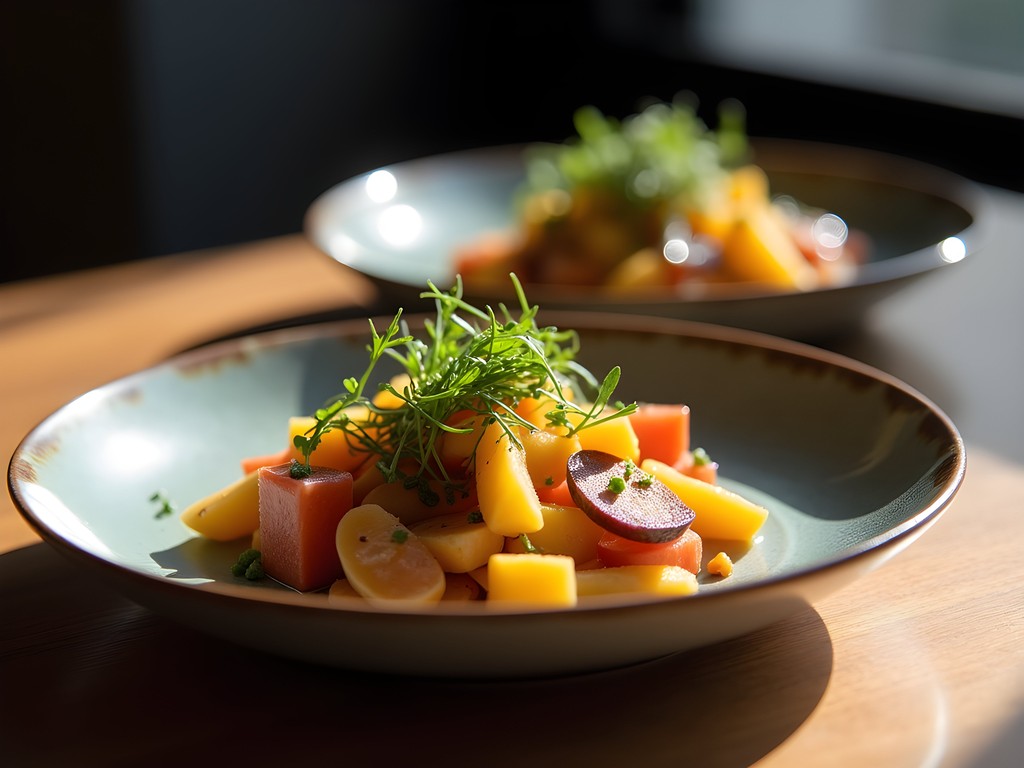
💡 Pro Tips
- Make reservations at fine dining establishments at least 2-3 weeks in advance
- Consider lunch rather than dinner for similar experiences at lower price points
- Don't hesitate to ask about ingredients you don't recognize—chefs are passionate about educating diners
Cooking as Cultural Therapy: Hands-On Learning
As someone who regularly incorporates cooking exercises into therapy sessions for clients struggling with cultural identity, I couldn't leave Bogotá without experiencing a hands-on cooking class. At Colombian Cooking Experience in La Candelaria, I joined a small group led by Chef Catalina, whose warmth and storytelling abilities matched her culinary expertise.
The four-hour class began with a visit to a small neighborhood market where Catalina explained the cultural significance of key Colombian ingredients. Back in her converted colonial home kitchen, we prepared a complete meal: patacones (twice-fried plantains), hogao (traditional tomato-onion sauce), ají (fresh chili sauce), and the star of Colombian cuisine—bandeja paisa, a hearty platter featuring beans, rice, ground meat, chicharrón, avocado, and a fried egg.
What made this experience particularly meaningful was how Catalina wove stories of Colombia's complex history through our cooking process. As we shaped arepas by hand, she explained how these corn cakes sustained indigenous communities for centuries before Spanish colonization and continue to represent resilience and cultural continuity.
"When you make food with your hands, you connect to generations before you who made the same movements," she told us—a sentiment that resonates deeply with my own work on embodied cultural memory and intergenerational healing.
For capturing cooking class memories and detailed food notes, I rely on my waterproof notebook which has survived countless cooking classes across four continents without suffering from inevitable kitchen splashes.
Beyond the technical skills acquired, cooking classes offer something profoundly therapeutic—the opportunity to slow down, engage all your senses, and connect with others through collaborative creation. Several participants commented that the four hours spent cooking together had created stronger bonds than days of conventional sightseeing would have.
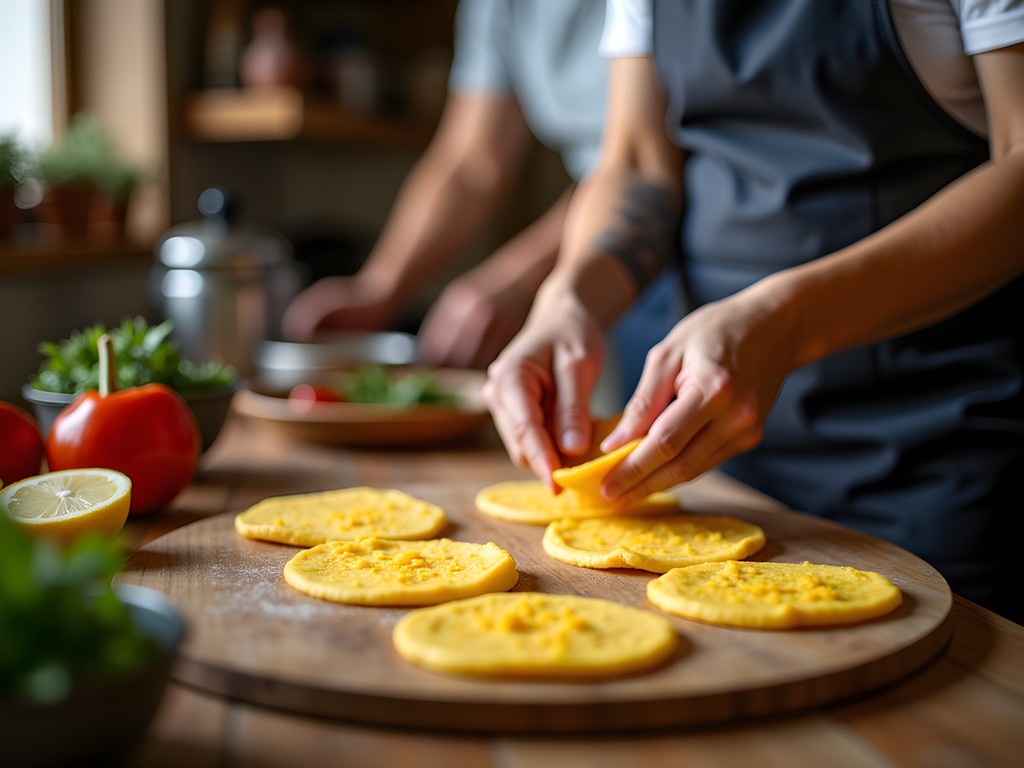
💡 Pro Tips
- Book cooking classes early in your trip to gain knowledge that enhances later dining experiences
- Don't worry about cooking skills—these classes welcome beginners and focus on cultural exchange
- Take notes on recipes and techniques—these are souvenirs that continue giving long after your trip ends
Final Thoughts
As my weekend in Bogotá drew to a close, I found myself sitting at a small café in Usaquén, reflecting on how this city's culinary landscape had offered me far more than delicious meals—it provided a framework for understanding Colombia's complex identity and ongoing transformation. From the pre-dawn market rituals to late-night conversations with innovative chefs, Bogotá revealed itself as a city healing historical wounds through food, preserving cultural memory on plates, and creating new narratives of Colombian identity one dish at a time. For travelers seeking meaningful connections, Bogotá's culinary revolution offers something increasingly rare in our globalized world: authentic food experiences that tell honest stories about place, people, and possibility. Whether you're sampling street arepas or savoring a meticulously crafted tasting menu, remember that in Bogotá, every bite is an invitation to deeper understanding. Buen provecho isn't just about enjoying your meal—it's about nourishing your soul through cultural connection.
✨ Key Takeaways
- Bogotá's culinary scene reflects Colombia's complex cultural history and ongoing social transformation
- Food experiences range from authentic street food to innovative fine dining at surprisingly accessible prices
- Cooking classes provide therapeutic cultural immersion beyond traditional tourism activities
- Markets and cafés offer important spaces for community connection and cultural preservation
📋 Practical Information
Best Time to Visit
year-round (Bogotá has consistent temperatures due to elevation)
Budget Estimate
$30-50 per day for food (excluding high-end restaurants)
Recommended Duration
3-4 days minimum to experience culinary diversity
Difficulty Level
Easy



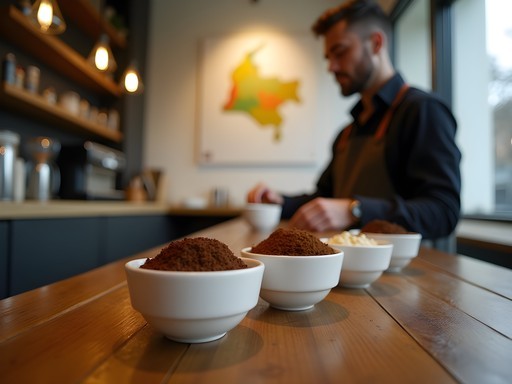
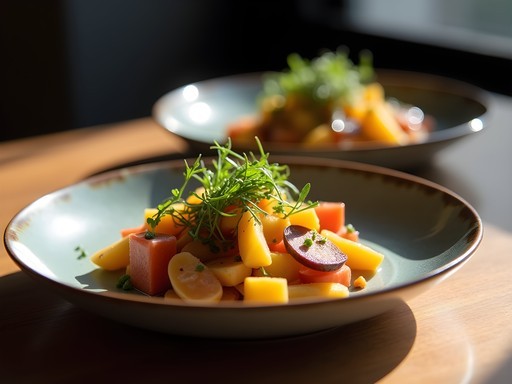
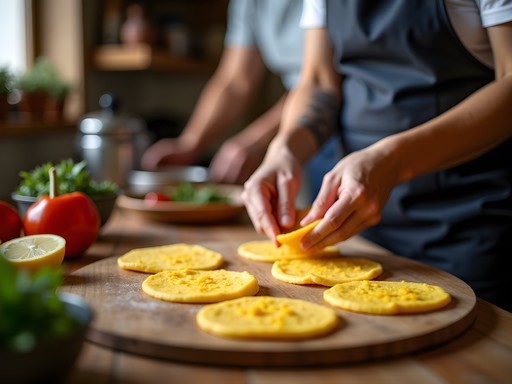










Comments
foodiexplorer
Those exotic fruits look amazing! What's that spiky red one called?
Sakura Lawson
That's rambutan! Similar to lychee but with a different flavor profile. The vendors at the markets are usually happy to let you sample before buying!
coffeeaddict45
Just got back from Bogotá and your coffee section is spot on! Azahar Coffee in Parque 93 was my favorite - their baristas do this amazing presentation about the different growing regions. Also tried Catación Pública where they let you sample coffees from different Colombian regions side by side. The difference between beans from Huila vs. Nariño was mind-blowing! For anyone going, most cafés offer the "slow bar" experience where they'll make your coffee in different methods (pour-over, Chemex, Aeropress) and explain the differences. So much more than just a cup of coffee!
Sakura Lawson
Azahar is fantastic! I didn't make it to Catación Pública - adding it to my list for next time. The coffee culture there really is special.
wanderingchef
Going to Bogotá next month! Which food market would you recommend for a first-timer?
Sakura Lawson
Definitely start with Paloquemao Market! It's the most accessible and has an incredible variety. Go early (around 9am) for the best experience and try the fresh fruit juices. Mercado Distrital is great too but a bit more local/less touristy.
wanderingchef
Thanks Sakura! Adding it to my itinerary for sure.
colombiatravelfan
Those arepas look incredible! Making me hungry just looking at your photos!
Bryce Diaz
Sakura, your post took me right back to my time in Bogotá last year! The Paloquemao Market was a revelation - I still dream about those lulos and zapotes. Did you try ajiaco? That hearty potato and corn soup with capers and cream became my go-to comfort food there. The coffee scene really is incredible - I spent hours at Café Cultor in Chapinero talking with the baristas about their direct trade relationships with farmers. One thing I'd add for anyone heading there: don't miss the Sunday ciclovía when they close major roads to cars and the whole city comes alive with street food vendors. Perfect way to eat your way through the city!
tripone
How's the safety situation in Bogotá? I really want to try all this amazing food but I'm a bit nervous as a first-time visitor to Colombia.
Bryce Diaz
Hey @tripone! Like any big city, you just need basic street smarts. Stick to popular areas like Zona G, Chapinero, and La Candelaria during the day. Use Uber instead of hailing taxis and don't flash valuables. The food markets are generally safe and welcoming to tourists. I used this guidebook which had great safety tips and food recommendations. Bogotanos are incredibly friendly and the food scene is absolutely worth exploring!
tripone
Thanks for the tips! Do you think I'll be ok with just basic Spanish?
Bryce Diaz
Basic Spanish goes a long way! Learn food words especially. Most upscale restaurants have English menus, but at markets and street stalls, pointing works too. The Google Translate app was my best friend!
wanderlust_emma
That photo of the fruit market is stunning! The colors are incredible. What camera do you use?
Sakura Lawson
Thank you! Most of these were actually just shot on my phone - Google Pixel 6 Pro. The light in those markets is so beautiful it does most of the work!
colombiatraveler
If you're into street food but worried about stomach issues, look for the stalls with the longest lines of locals. That's how I found the best lechona in La Candelaria. Also, don't miss hot chocolate with cheese - sounds weird but it's a Colombian classic!
sunsetway
Hot chocolate with CHEESE?? That sounds crazy but I'm intrigued! Where's the best place to try this?
colombiatraveler
La Puerta Falsa in the historic center is super traditional and does it perfectly! The cheese slowly melts into the chocolate and it's heavenly.
smartbuddy
OMG those fruit pictures have me drooling! I had no idea Colombia had so many fruits I've never even heard of. Your description of that coffee renaissance section really makes me want to visit. I'm not usually a foodie traveler but this post might have converted me!
Sakura Lawson
The fruits were a revelation for me too! Make sure to try lulo and feijoa if you go - completely changed my perspective on what fruit can taste like!
smartbuddy
Will do! Thanks for the recommendations!
Mason Sullivan
Sakura, you've captured the essence of Bogotá's food scene perfectly! I spent a month there last year doing a deep dive into the local cuisine. One thing I'd add for readers - don't miss the Paloquemao Market. It's less touristy than some others and the fruit section is mind-blowing. I tried fruits I'd never even heard of before (lulo and mamoncillo became obsessions). For coffee lovers, I'd recommend adding Café Cultor to your list - they work directly with farmers from post-conflict regions and their baristas can tell you exactly which farm your beans came from. I brought home a bag of their Huila region beans and am still dreaming about it. I used my coffee grinder to prepare it at home and it's almost as good as being back in Bogotá! Fantastic write-up as always!
Sakura Lawson
Mason! So good to see you here. Paloquemao was actually on my list but I ran out of time. Lulo was a revelation though - had it in juice form several times. And thanks for the Café Cultor tip - adding it to my list for next time!
mountainguide
Heading to Bogotá next month for the first time. Which of those fine dining places would you say is most worth the splurge? I'm a bit nervous about the language barrier too since I don't speak Spanish!
Sakura Lawson
I'd recommend Leo by Leonor Espinosa for a splurge - it's an amazing culinary journey through Colombia's biodiversity. Don't worry about the language barrier in fine dining places - most have English-speaking staff. I found it helpful to have a pocket phrasebook for the markets though!
Timothy Jenkins
I second Leo - absolutely phenomenal. Also try Mini-Mal if you can't get a reservation at Leo. The staff at both are very accommodating with English speakers.
Venture X
Premium card with 2X miles, $300 travel credit, Priority Pass